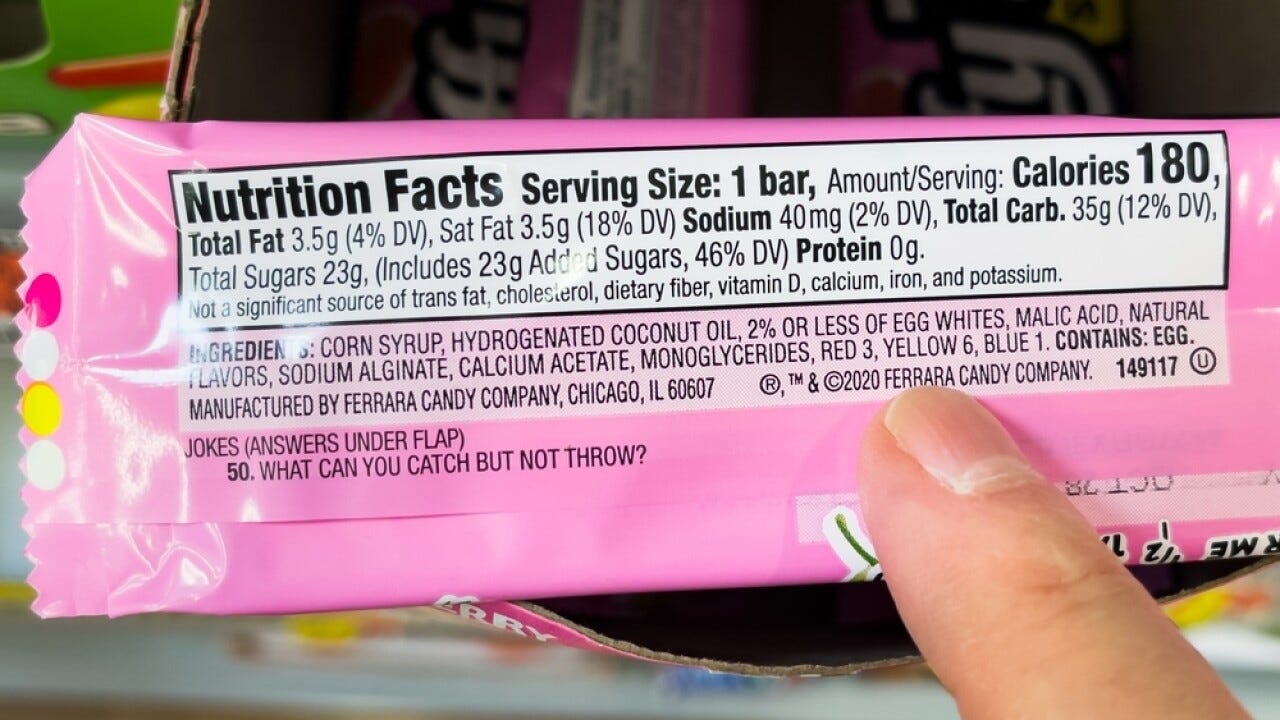RFK Jr. wants to get rid of food dyes. These 'crunchy moms' are ready.

Robert F. Kennedy Jr.’s confirmation hearing with the Senate Finance Committee on Wednesday addressed a key issue for a large portion of voters: food dyes.
On Wednesday, Kennedy said he wants to reduce the use of artificial food dyes and promote the consumption of whole foods, while still letting Americans make their own decisions for their personal diet.
Kennedy has accused big business, drug companies and federal agencies of depleting Americans' health with toxic chemicals and additives, and vowed to reduce the spread of disease. His "Make America Healthy Again" messaging resonated with voters and a longstanding movement of mothers who are worried about what's going into their food and have expressed frustration at agencies like the Food and Drug Administration (FDA), when it comes to making healthy eating decisions for their kids.
‘Crunchy moms’ are hopeful for RFK Jr. to ban food dyes
Following the election, these moms took to TikTok to share their excitement. One posted to the song "Walking On Sunshine" with the caption: "Crunchy moms knowing the era of constantly checking food labels for dyes, seed oils, and chemicals is coming to an end because RFK Jr. is ready to advocate for the health of our children."
"FDA, count your days. 👋🏼 #MAHA," she added.
Courtney Luna, social media influencer and stay-at-home-mom, is also hopeful for Kennedy’s confirmation.
Luna, also the author of “Carnivore in the Kitchen,” says she’s tired of seeing “processed junk and dyes and chemicals” that she “wouldn’t even say are food” in the grocery store or in school lunches. Her children are homeschooled.
“I just want what's best for them so they can feel their best,” she says. “The fact that he (Kennedy) actually seems to care and want to make these changes is great.”
Moms want to make informed decisions for their kids' diets
In November, actress Eva Mendes took to Instagram to call for the removal of artificial food dyes in Kellogg's cereal, and it sparked a firestorm, with moms across the country cheering her on.
In the United States, Kellogg's Froot Loops uses food colorings (Red Dye No. 40, Yellow Dye No. 5, Yellow Dye No. 6, Blue Dye No. 1) and butylated hydroxytolune (BHT), which is a lab-made chemical added to foods as a preservative. Research on BHT as a carcinogen has mixed results depending on the animal and parameters tested.
Meanwhile, in Canada, the company uses concentrated carrot juice, watermelon juice, huito juice and blueberry juice to color Froot Loops.
So when Kennedy began campaigning on these same concerns, some mothers finally felt seen.
“You look at the ingredients of Lucky Charms here and Lucky Charms in Europe, and the ingredients they use here are different and more horrible, and have all the dyes,” Luna says.
People need to be aware of the risks and benefits of each ingredient, she says, so that they can make their own decisions for their families.
Red No. 3 was recently banned, but ‘that’s just the beginning’
In a recent win for these advocates, Red No. 3, a color additive made from petroleum that gives foods and drinks a bright, cherry-red color, was recently banned.
The FDA announced on Jan. 15 that it has amended its color additive regulations, no longer allowing the use of artificial Red No. 3 in food and ingested drugs. The removal is in response to a color additive petition filed in 2022 by advocates who claim the additive is linked to cancer and behavioral problems in children.
"I was called a conspiracy theorist because I said that red dye caused cancer," Kennedy said on Wednesday. "Now, FDA has acknowledged that and banned it."
Manufacturers who use Red No. 3 in food will have until Jan. 15, 2027, to reformulate their products, while those who use the dye in drugs will have until Jan. 18, 2028, according to the FDA announcement. Food imported in the U.S. will also be required to comply with the new regulations.
“That’s great,” Luna says of the new restrictions. “But that’s just the beginning. What about Red 40?”
Red No. 3 was banned from use in cosmetics in the U.S. in 1990 because of evidence that the dye is carcinogenic at high doses to lab rats. However, it remained one of nine synthetic dyes approved for use in food products. The eight remaining approved dyes include Blue No. 1, Blue No. 2, Green No. 3, Orange B, Red 40, Yellow 5, Yellow 6 and Citrus Red − all used to give food, drinks and ingested drugs bright colors.
“We have a long road ahead of us,” Luna adds, “but I think people are starting to be aware that what they're eating matters.”
Contributing: Greta Cross and Eric Lagatta